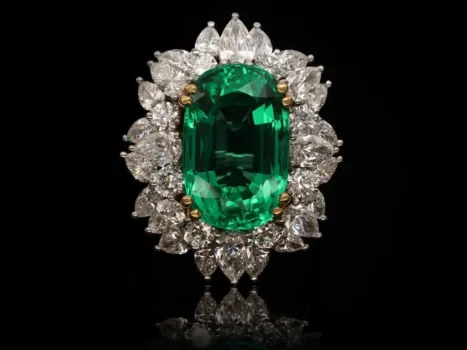
Written nearly 2,500 years ago, the tragedies of ancient Greek playwright Sophocles resonate across time and generations. They touch on enduring themes associated with the human condition, including the entire spectrum of personal grief, the need for inner fortitude and the importance of reconciliation.
Sophocles’ seven extant dramas — especially his Theban plays, Antigone, Oedipus Rex and Oedipus at Colonus — have inspired a number of reworkings for the stage and screen, not to mention a variety of painterly interpretations over the centuries, including compositions by such diverse talents as Francis Bacon, Max Ernst, Georges Braque, Salvador Dalí and Jean-Michel Basquiat.
Yet how many of us know what the dramatist himself looked like? Perhaps surprisingly, Sophocles was said to have been both athletic and handsome — attributes corroborated by ancient depictions of the man that showcase his strong, angular features, full lips and prominent nose, typically framed by a mound of luscious locks and a generous beard.
A fragment of a marble sculpture dating to the 1st or 2nd century AD and offered on 1stDibs by London antiquities dealer ArtAncient is thought to portray the renowned playwright, capturing his essence and conveying a sense of divine wisdom and strength.
While the sweeping curves of his beard, the pronounced line of his high cheekbone and the well-defined structure of his aquiline nose contribute to the charm of the unique piece, it is the absence of other features that lends a certain mystique, says Costas Paraskevaides, the gallery’s founder. “Fragments are often more evocative than intact busts and sculptures, since they allow us to weave a narrative between volume and void,” he says. “What’s more, this fragment also draws our attention to the intricacies of the Roman craftsmanship. For example, you can see the ancient traces of a flat chisel when you look closely at the shallow undulations of the beard.”
The provenance of the piece is just as compelling as its aesthetic. Its ownership can be traced back to mid-19th-century Danish sculptor Jens Adolf Jerichau, whose own work was greatly inspired by myth and whose collecting ethos seemingly deviated from the period’s emphasis on perfection and complete statues, or ones restored to as close to their original condition as possible.
“You can imagine that in a grand stately home, the interior style was very ornate with exacting standards, so fragments such as this were generally not appreciated as decorative objects,” Paraskevaides explains. “To be able to trace the history of an object like this so far back is quite rare, because more than one hundred years ago, it wouldn’t have held the same value.”
He likens Sophocles’ fragmented face to an intriguing visual conundrum, encouraging the mind to wander. “Look closely and you’ll see an interesting iron-oxide mark on the nose,” he says. “Was it caused by a metal pin that stained the marble over centuries of burial? It’s not something we will ever know for certain, but it adds to the enigmatic and thought-provoking quality of this sculpture. Just like [Percy Bysshe Shelley’s] Ozymandias, it’s damaged and incomplete, but it’s also very poetic and charged with the presence and the power it once had all those centuries ago.”





